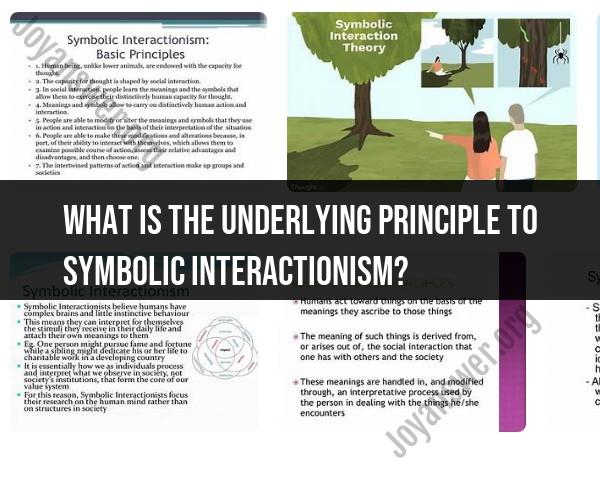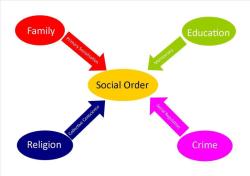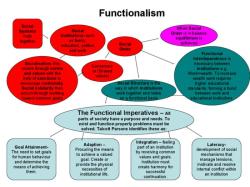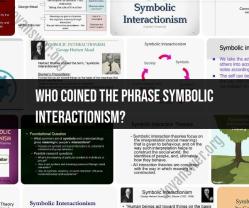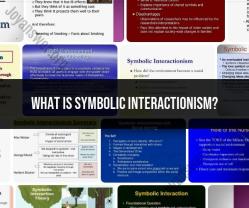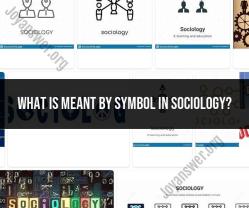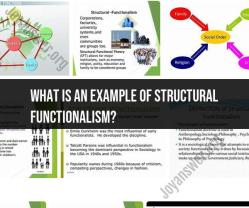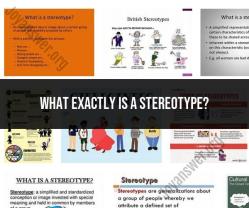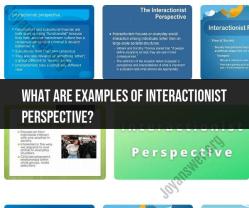What is the underlying principle to symbolic interactionism?
The underlying principle of symbolic interactionism is that human behavior and social reality are constructed through the use of symbols and the interpretation of those symbols by individuals. This sociological perspective, developed primarily by George Herbert Mead and later expanded upon by other sociologists, focuses on the following key ideas:
Symbolic Meaning: Symbolic interactionism emphasizes that people act toward things based on the meanings those things have for them. These meanings are not inherent in the objects or actions themselves but are socially constructed through interaction with others.
Social Interaction: Human beings engage in social interaction by using symbols, which can be words, gestures, facial expressions, or other non-verbal cues. These symbols help individuals communicate, interpret, and understand the world around them.
Interpretation: Symbolic interactionists stress the importance of interpretation in human interaction. People continuously interpret the symbols they encounter, attaching meaning to them based on their social context and past experiences.
The "Self": One of the central concepts in symbolic interactionism is the idea of the "self." The self is not a fixed or static entity but is developed through social interactions. It consists of the "I" (the spontaneous, creative, and unique aspect of the self) and the "Me" (the part of the self that represents the self's view of the generalized other – how one perceives themselves in relation to society).
Social Construction of Reality: Symbolic interactionism suggests that the social world is not objective or pre-determined but is constructed by individuals and groups through their interactions. People create their social reality through shared understandings of symbols and their meanings.
Role-Taking: Role-taking is a crucial concept within this perspective. It involves imagining oneself from the perspective of others, understanding their viewpoints, and adjusting one's behavior accordingly. This process is vital for effective social interaction and cooperation.
Society and Self: Symbolic interactionism also highlights the interconnectedness of society and the self. Society is seen as a product of individual and collective interactions, and individuals, in turn, are shaped by the social context in which they exist.
In summary, the underlying principle of symbolic interactionism is that human behavior and social reality are the result of the ongoing process of creating, interpreting, and exchanging symbols. It emphasizes the dynamic nature of human interaction and the role of symbols in shaping our social world.
What is the underlying principle of symbolic interactionism in sociology?
The underlying principle of symbolic interactionism in sociology is that people use symbols to create and maintain meaning in their social worlds. Symbols are anything that is used to represent something else, such as words, gestures, objects, and clothing. Symbolic interactionists believe that people's interactions with each other are shaped by the meanings they attach to these symbols.
Key concepts and tenets of symbolic interactionism as a sociological theory:
- Symbols: Symbols are anything that is used to represent something else. They can be verbal (e.g., words) or non-verbal (e.g., gestures, objects, clothing).
- Meaning: Meaning is the significance that people attach to symbols. Meanings are not inherent in symbols themselves, but are created and negotiated through social interaction.
- Self: The self is a social concept that is developed through interaction with others. People learn who they are and how to behave through the feedback they receive from others.
- Social construction of reality: Social reality is not objective, but is constructed through social interaction. People use symbols to create and maintain shared meanings, which in turn shape their understanding of the world around them.
How does symbolic interactionism explain human social behavior and communication?
Symbolic interactionists believe that human social behavior and communication are shaped by the meanings that people attach to symbols. For example, when two people greet each other with a handshake, they are using the handshake as a symbol of respect and friendship. The meaning of the handshake is created and maintained through social interaction, and it allows the two people to understand each other's intentions and expectations.
Another example of symbolic interactionism in action is the way that people use language to create and maintain social roles. For example, when a teacher speaks to their students in a classroom setting, they are using language to assert their authority and to communicate their expectations to the students. The students, in turn, respond to the teacher's language in a way that acknowledges the teacher's authority and role in the classroom.
The influence of symbolic interactionism on the field of sociology:
Symbolic interactionism has been a highly influential theory in the field of sociology. It has been used to study a wide range of social phenomena, including deviance, gender, race, and social class. Symbolic interactionism has also been used to develop other sociological theories, such as social constructionism and dramaturgy.
Critiques and limitations of symbolic interactionism as a sociological perspective:
One of the main critiques of symbolic interactionism is that it is too focused on the individual and not enough on the social structure. Symbolic interactionists often focus on how individuals create and maintain meaning through social interaction, but they may not pay enough attention to the ways in which social structures constrain and shape individual behavior.
Another critique of symbolic interactionism is that it is difficult to test empirically. Symbolic interactionists often focus on subjective meanings and experiences, which can be difficult to measure and quantify. This makes it difficult to test symbolic interactionist hypotheses using traditional scientific methods.
Despite these critiques, symbolic interactionism remains an important and influential perspective in the field of sociology. It has helped us to understand how people create and maintain meaning in their social worlds, and it has provided insights into a wide range of social phenomena.
